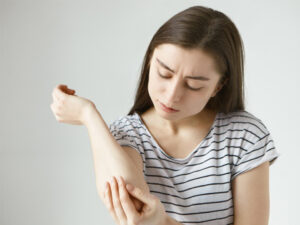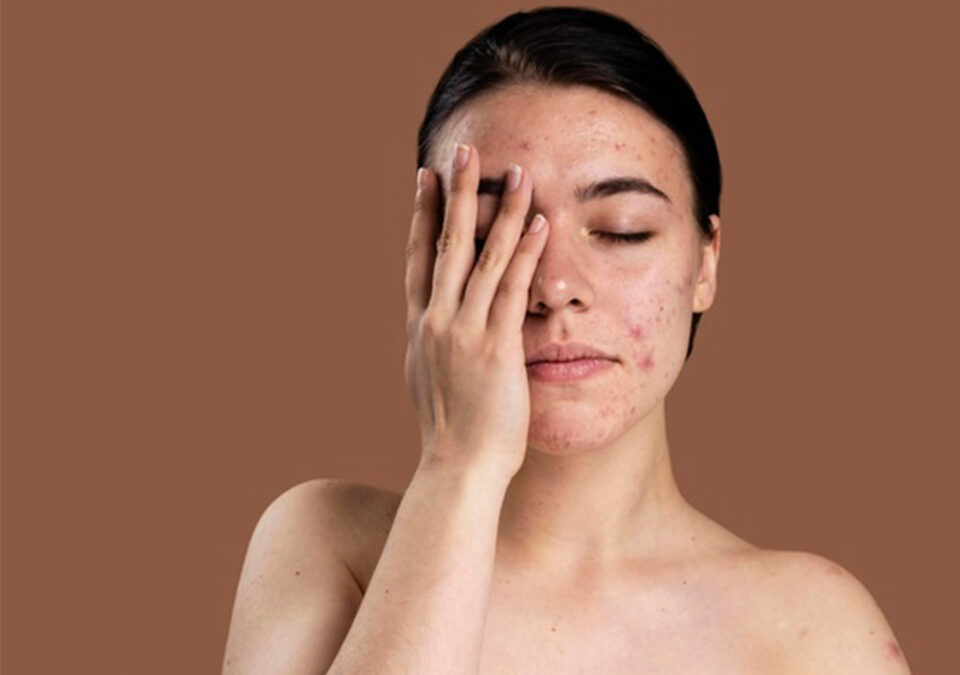
Impacts Of Juvenile Diabetes On Children’s Mental Health
December 9, 2021
Can Diabetes Lead To Depression?
December 9, 2021Diabetes can lead to many complications, one of which is skin disorders. Some of these skin disorders are very common such as bacterial and fungal infections. Diabetes only increases the risk of getting these conditions. However, there are also many other skin disorders, such as diabetic dermopathy, diabetic blisters, etc., that occur only as a result of diabetes. All these skin conditions can be easily cured by managing diabetes efficiently.
Some Skin Conditions That Develop As A Result of Diabetes:
- Bacterial Infections:
Although bacterial infections are common for everyone, it is more prone in people with type 2 diabetes. Elevated blood sugar levels not only cause bacterial infections but also worsen their condition in terms of size, number and frequency. The most common bacterias that cause skin infection are Staphylococcus and Streptococcus.
Several types of bacterial infections occur in people with diabetes, such as styes, boils, folliculitis, carbuncles, infection around the nails, etc. If you have a bacterial infection, you should contact your doctor immediately, so they can treat you with antibiotics before the infection becomes worse.
- Fungal Infections:
People with diabetes may also easily get a fungal infection, such as jock itch, athlete’s foot, ringworm, vaginal infection, etc. These infections often occur in warm and moist folds of skin, such as breasts, around the nails, between fingers and toes, in the corners of the mouth and the armpits. If you have a fungal infection, you should immediately call your doctor.

- Itching:
Diabetes may also cause localized itching. It usually occurs due to dry skin, yeast infection or poor circulation. Itching does not need medications in most cases and can be easily cured at home by applying moisturiser to your skin, taking a bath daily, etc.
- Acanthosis Nigricans:
Acanthosis nigricans is a skin condition that occurs in people with diabetes, especially those who are overweight. In this condition, brown raised areas appear on the skin, usually on the sides of the neck, armpits, groin, hands, elbows and knees. The best way to cure acanthosis nigricans is by losing excess weight.
- Diabetic Dermopathy:
Diabetes may cause changes in the blood vessels, which can further lead to diabetic dermopathy. Diabetic dermopathy is a condition in which light brown, scaly patches appear on the skin, usually on the front of both legs. This disorder does not hurt or cause pain and itching, and therefore, does not need to be treated.
- Necrobiosis Lipoidica Diabeticorum:
Changes in the blood vessels can cause another disease, called necrobiosis lipoidica diabeticorum or NLD. Although it is very similar to diabetic dermopathy, NLD causes fewer, deeper and larger patches. These spots or patches can be itchy and painful. They can also crack open and cause sores. NLD is a rare disease and does not need to be treated as long as you do not get open sores.
- Diabetic Blisters:
Also known as bullosis diabeticorum, diabetic blisters are medium to large sores that are usually painless and involve no redness around them. They look like burn blisters and often occur in people who suffer from diabetic neuropathy. Diabetic blisters are mostly found on the backs of fingers, hands, toes, feet, legs and forearms.
- Eruptive Xanthomatosis:
Eruptive xanthomatosis is a skin condition in which firm, yellow and pea-like enlargements occur on the skin. It usually occurs on the back of the hands, feet, arms, legs and buttocks. The leading cause of eruptive xanthomatosis is uncontrolled levels of blood sugar levels. This disorder is usually found in young men with type 1 diabetes and can be easily cured by managing diabetes effectively.
- Digital Sclerosis:
Digital sclerosis is a rare skin condition that occurs in people with type 1 diabetes. In this disorder, tight, thick and waxy skin develops on the back of hands, toes, forehead, knees, ankles or elbows. The only way to treat digital sclerosis is by regulating your blood sugar levels.

- Disseminated Granuloma Annulare:
Disseminated granuloma annulare is a skin disorder in which arc-shaped rashes occur on the skin. They usually occur on the body parts farthest from the trunk, such as fingers and ears, and can easily be treated with medications.
Tips To Prevent Skin Diseases In Diabetes:
- Most skin disorders are caused due to uncontrolled diabetes. Therefore, the best way to prevent these skin complications is by managing your blood sugar levels.
- Check your skin daily for any rashes, infections, redness, patches, spots or sores.
- Keep your skin clean and dry. Moisturise it often to prevent chapping.
- Bath every day. However, avoid hot baths and showers as they can make your skin dry.
- Remain aware of all the cuts and wounds, and treat them before they develop an infection.
- Use mild shampoos and soaps.
- Check your feet daily, keep them dry, moisturise them twice a day and wear comfortable shoes and socks to prevent sores.
- Consult a dermatologist if you suffer from any skin problems. They will help you treat them as well as prevent any further complications.
References:
- https://www.diabetes.org/diabetes/complications/skin-complications
- https://my.clevelandclinic.org/health/articles/12176-diabetes-skin-conditions
- https://www.medicalnewstoday.com/articles/317360
- https://dermnetnz.org/topics/skin-problems-associated-with-diabetes-mellitus
- https://www.healthline.com/health/type-2-diabetes/skin-problems
- https://www.aad.org/public/diseases/a-z/diabetes-warning-signs




